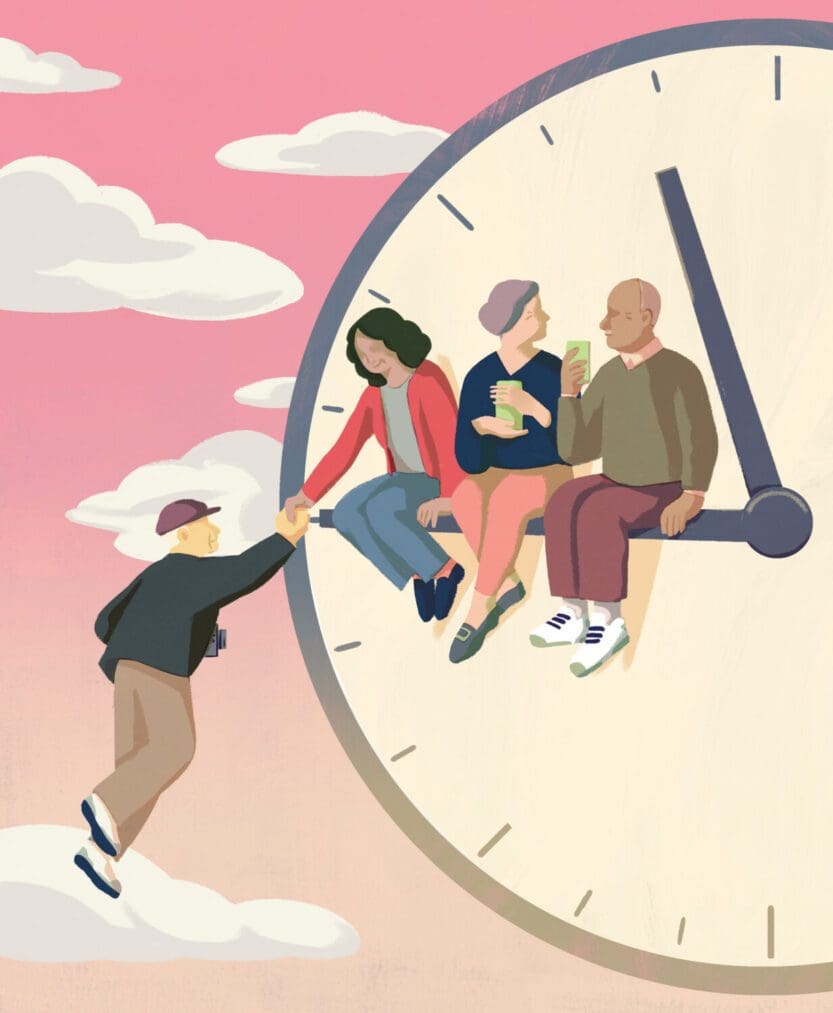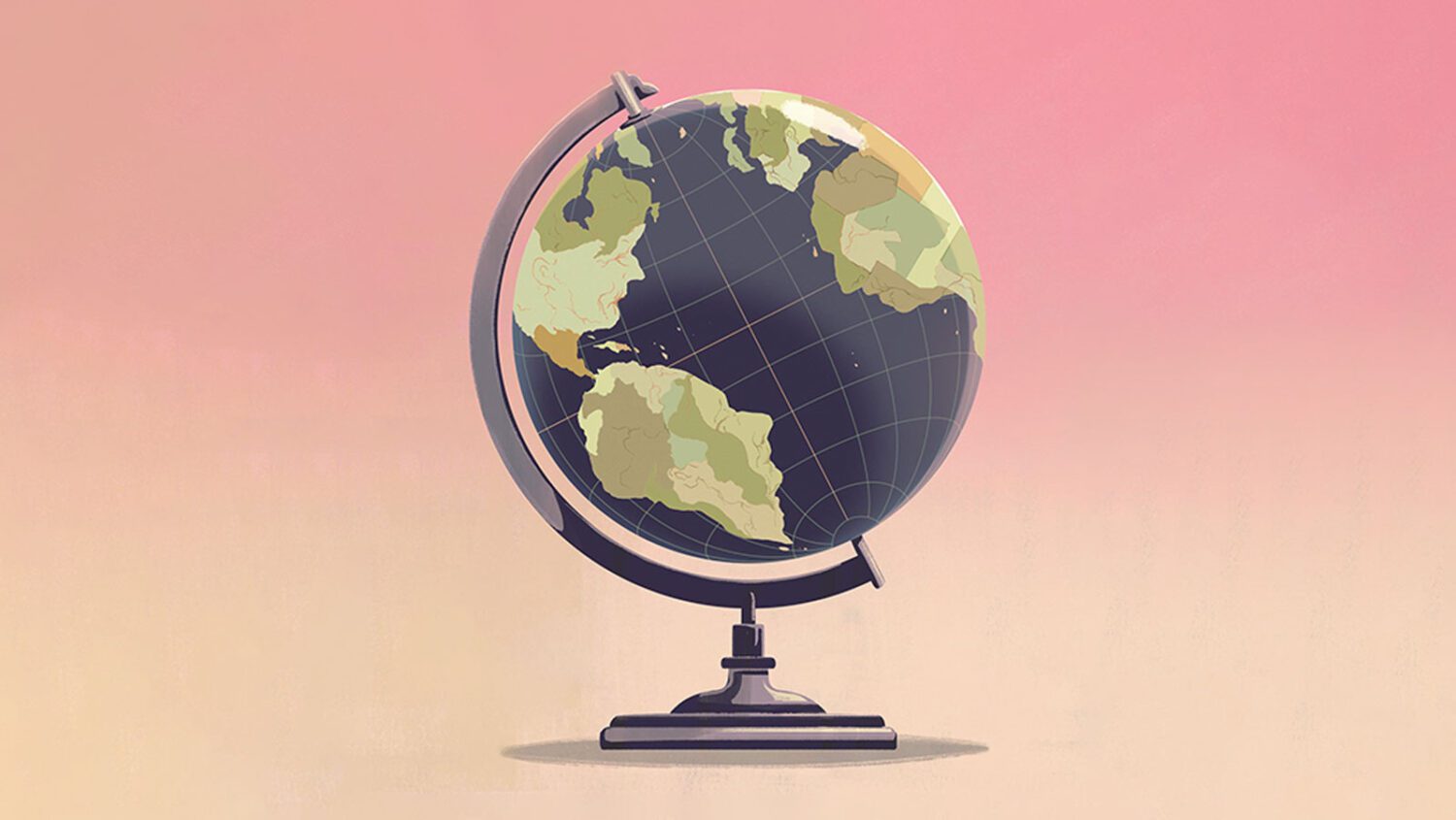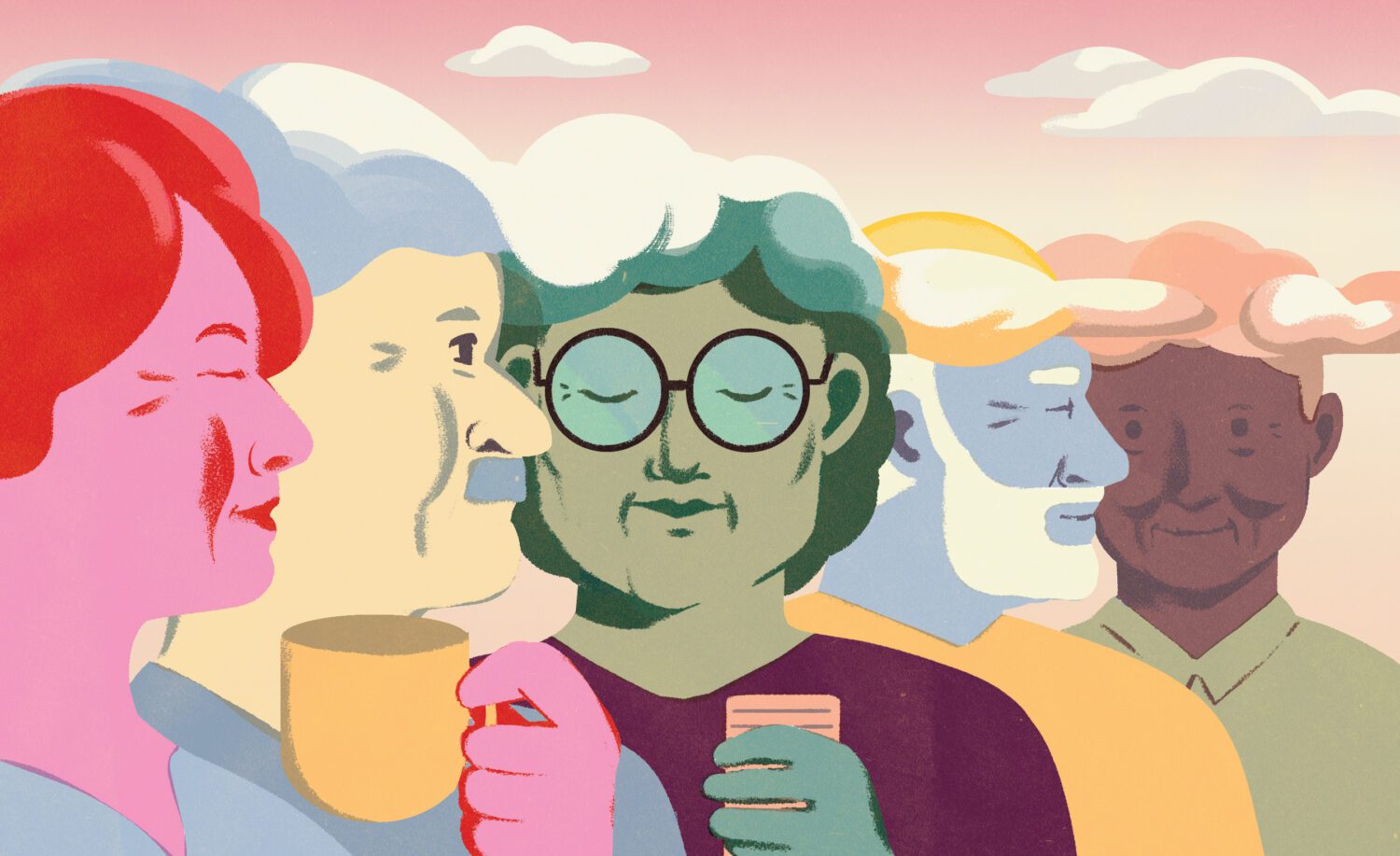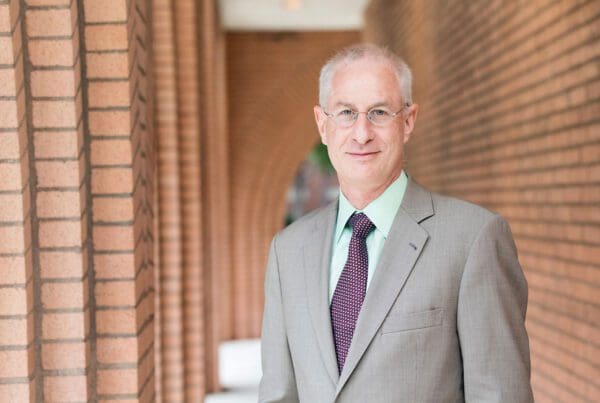In 2019, there were 703 million people ages 65 and over in the world; by 2050, the number is projected to double to 1.5 billion. This group is growing at a faster rate than the total population, which raises the question: How will the world handle the needs of these increasing numbers of older people?
Global organizations are only recently recognizing the need to address aging challenges and devise policies to help people live healthier as they live longer, as USC Leonard Davis Dean Pinchas Cohen wrote in a column regarding the inclusion of aging in the G-20 Summit agenda in 2019: “We need to be investing in health spans, extending the portion of our lives that we spend in good health rather than in disability.”
Addressing the needs of our aging population poses large challenges — and the pandemic has shown how important it is to cooperate across nations to effectively develop solutions these challenges. USC gerontologists are working to understand the global aging landscape and apply their knowledge to improving conditions.
Aging looks different across the globe
Part of the problem is that researchers still don’t know what normal aging is, says Associate Professor Jennifer Ailshire, Assistant Dean of International Programs and Global Initiatives at the Leonard Davis School. “When we look around the globe, we get different health care cultural contexts. But if we see something that is pretty consistent, then we can think of that as something that is a normal, typical aspect of aging.” The power of doing global comparisons, she adds, is that researchers can find out more about the true nature of aging than they would by looking at just one country. USC is unique in the creation of the information hub Gateway to Global Aging Data, which facilitates the comparison of data from different studies to dig into some of the issues in aging.
Ailshire’s research focuses on social and economic comparisons across countries. She recently published a paper on family caregiving and where people die, illustrating that social factors are critical in understanding equity. Most international research looks at data and ignores social environment, she says, but where people die involves both their socioeconomic and health status — no matter where in the world they lived. “Research on determinants of place of death has largely ignored the family,” she says. “Often people only die at home if someone is there to take care of them, so people who had family members who could care for them had the option to die at home.”
The research represents a paradigm shift: The death and dying experience is not just individual, but happens in a broader experiment of social context, Ailshire says. “I think there is an acknowledgment now that supporting a good end-of-life experience does not just mean supporting the person [who is] dying, but also the family, because they are so involved in this experience,” she says. “End of life is as important as other parts of life.” USC has had a research focus on caregiving across the lifespan, Ailshire says, and governments are beginning to create policies on these issues.
USC University Professor and AARP Chair in Gerontology Eileen Crimmins has worked on studies assessing healthy aging that include both biological and social factors — and her work now involves more than half the globe, from India to Europe. She says she became interested in promoting the inclusion of biomarkers and biological measurement in all of these studies starting back in the 1990s, when England began studying aging in earnest. In many countries, such studies have lasted for decades, compiling both survey data and biological data and offering a robust dataset to help us understand aging. “This comparable approach to aging across lots of different countries lets us see what is universal and what is not universal, and what might be affected by policy and social circumstances,” Crimmins says.
Aging tends to happen earlier in countries where people have had adverse childhoods and may not have had adequate nutrition or good medical care early in life. But even that isn’t always true: Researchers have puzzled for years about the relatively poor performance of the United States in longevity and health, despite the high degree of medical access. The U.S. ranks 36th in life expectancy.
Crimmins is also involved in studies to examine the genetic factors that predict illnesses like Alzheimer’s. “We don’t know if those genetic markers are the same in, say, India and the United States, or whether the risk factors in the United States are different from those in India,” she says — though the data point of low education as a risk factor for Alzheimer’s applies everywhere. Other things are less clear, such as the role of hypertension or diabetes. Crimmins and her colleagues are also beginning to study epigenetic changes — that is, changes not in the DNA itself, but in what genes are expressed — related to cognitive development as well as cognitive decline.
One location where social factors and biology come together in outcomes is Ireland. Crimmins has a Three-Countries Grant to analyze data obtained from people living in Ireland, Northern Ireland and the United States, looking at childhood circumstances and epigenetic changes. Those three populations have a great deal of similarity in terms of genetic background, and even social and economic background somewhat, relative to the rest of the world.
Adversity in childhood is linked to all kinds of health outcomes later in life, and Northern Ireland had a period of violence and unrest between Catholics and Protestants that was distributed along geographic lines. “People who are now old had exposure to stress and disorganization when they were children,” says Crimmins. “If you lived right where that was happening, you’d have [had] a very stressful existence, but if you lived away from it, you were sort of saved from it.”
Comparisons of these different populations can potentially answer larger questions about health, retirement health care usage, and family involvement, since they follow people from middle age until death. Crimmins says that ultimately, the goal is to learn from this and see what policies can make people’s lives easier, better and healthier. For example, social support throughout the lifespan — medical, child care, aging and educational support — can have a real impact. “All those things make a difference in terms of the wear and tear on the people as they age,” she says.
Another thing that seems robust in the research: social integration. Loneliness and isolation are known risk factors for faster aging, but Crimmins points out that this doesn’t mean everybody has to have a whole lot of friends. Instead, it means that people have to have the kinds of groups and social support that they need. “It’s pretty clear that being isolated is difficult and can lead to adverse effects,” Crimmins says.
Pandemic has shown importance of data
In order to get accurate snapshots of aging across the globe, researchers need access to high-quality data — and the pandemic has shown how vital it is, says Jessica Ho, demographer and USC Leonard Davis assistant professor of gerontology. Ho wrote an essay published in the journal Population and Development Review showing that many nations still struggle to capture vital registration data for all of their citizens. The pandemic also impacted lifespans across the globe, disproportionately impacting older people.
Statistics play a huge part in shaping public policy, so it is vital that accurate numbers are reported, says Ho. But multiyear lags in data gathering are becoming more common, as is political subterfuge. “Around the world, data are being delayed, distorted and marshaled in support of political agendas precisely because they are so valuable,” Ho says. “Our data-collection systems for births, deaths and migration are too important — too vital, as their name suggests — to be subverted by political interference and underinvestment.”
Her research focuses on life expectancy and health over the course of life across different populations. While it used to be that researchers considered people 65 and over as an older population, the line is now drawn at 85 in many places, because people are living longer lives. One of the big questions that remains: Is there a limit to life expectancy?
Researchers typically thought 120 years was the top end of a person’s lifespan and that there was no way to live beyond that. However, they’re now having a more nuanced conversation, Ho says, as life expectancy is expected to increase. Also, life expectancy isn’t everything, she says: “It’s great to live a long time, but what we want to know is, as people are living longer, are they also living healthier lives? People want to live completely healthy, cognitively and functional right up to the moment that [they] die, at the oldest possible age.”
In the United States, even before the pandemic hit, life expectancy was falling further and further behind peer nations, Ho says. Our life expectancy is longer than ever before; the reason people in the U.S. we don’t live as long as other people is due to high levels of younger-age mortality. “[People in the U.S.] are not dying from senescence but [from] drug overdose, car accidents, homicide and sometimes diseases related to behaviors like smoking and alcohol [use], “ she says. “At some point, demographers thought any society would reduce these deaths to nearly zero. Others have. But we have not.”
Putting research into action
Yongjie Yon came to USC with a specific focus in mind: to study elder abuse and prevention of elder mistreatment. He initially wanted to work in forensic psychology, focusing on different crimes against older people, but was drawn into gerontology. Yon earned his doctoral degree at the USC Leonard Davis School, where he studied under Professor Kathleen Wilber in the Secure Old Age Lab. Now a technical officer at the World Health Organization, his work includes a focus on elder abuse.
Yon’s research shows that while robust prevalence studies are sparse, elder abuse seems to affect 1 in 6 older adults worldwide, which is roughly 141 million people. This is likely to be an underestimation, as only 1 in 24 cases of elder abuse is reported, in part because older people are often afraid to report cases of abuse to family, friends or the authorities. Some research shows that the prevalence has actually increased since the pandemic began in 2020.
In addition, elder abuse is a neglected global public health priority. “Compared to all kinds of interpersonal violence — violence against children or women or youth violence — elder abuse is sort of the least researched and receives the least attention,” says Yon. It’s also a nuanced and complex subject, because by definition it happens within a trust relationship.
Preventing the problem starts with educating the public about what abuse is — whether it’s psychological abuse or physical abuse, such as restraining someone against their will. Other strategies include educating and supporting caregivers. In 2016, the World Health Assembly adopted a global strategy and action plan on aging and health that provides guidance for coordinated action among countries on elder abuse; that work continues today.
Looking at aging from a global perspective means looking for solutions everywhere, Yon says. “If you do research with a national perspective or even a regional perspective, you may be missing out on what the best practices are internationally,” he says. “For the WHO, it is important to have that kind of overview of what is happening around the world.” He adds that countries can also peer into their aging future by learning from other places where the population is older, and taking inspiration from them.
Ultimately, understanding the global landscape of aging will help improve people’s lives in every era — and the recent experience of the pandemic has brought the lessons home for schools such as the Leonard Davis School. “This pandemic reinforces what led us all to gerontology in the first place: a belief that we all can, and should, work together to improve how we live and age,” Dean Cohen says. “Aging is universal, but aging solutions need to be ethnically and geographically personalized.”
Illustrations by Cornelia Li






